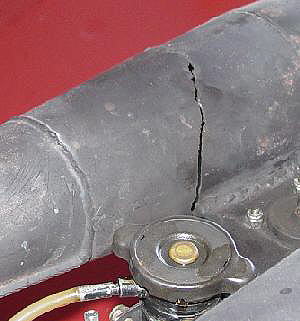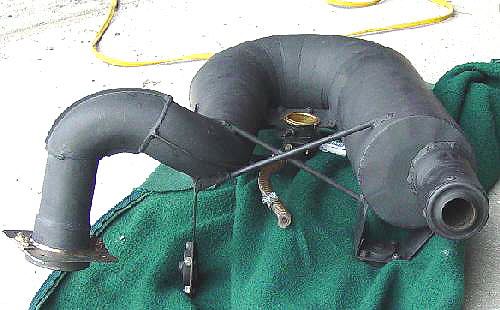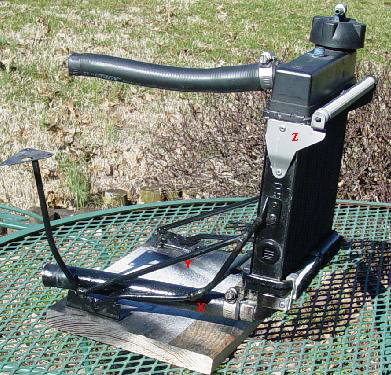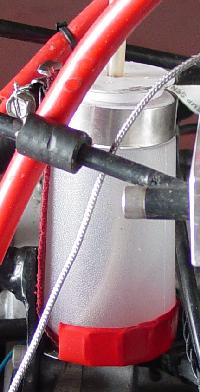|
|
|
With Victor 1+ engine flight time approaching 47 hours, and having gotten rid of the yaw trim problem and lowering the thrust line, the FireFly was slipping nicely through the air. I felt it was time to go the final step and to limit engine power output to 38 hp (5,200 rpm on the Victor 1+) by increasing propeller pitch so the FireFly would meet all AC 103-7 requirements.
I increased IVO propeller pitch and flew the pattern to determine maximum engine rpm, and then on the ground added more pitch and repeated the process. When the engine was limited to 5,400 rpm, I realized that I was in trouble. The FireFly flew well, but on the ground it was another matter. Even with the engine idling at 1,000 rpm, one had to excessively ride the brakes while taxiing. The inertia of the 56 inch propeller was low but the engine firing impulse was shaking the cage. I decreased propeller pitch and flew again and found the engine topped out at 5,800 rpm. On this pattern circuit, engine noise increased.
|
 Looking things over, I discovered the muffler was cracked in four places. The crack shown to the left initiated at the back of the mounting bracket that I had welded in the "U" shaped muffler. Another crack continued downward from the same corner and progressed along the bottom of the muffler. Fortunately they, the top and bottom cracks, did not meet. This left about one inch of metal holding the muffler together.
Looking things over, I discovered the muffler was cracked in four places. The crack shown to the left initiated at the back of the mounting bracket that I had welded in the "U" shaped muffler. Another crack continued downward from the same corner and progressed along the bottom of the muffler. Fortunately they, the top and bottom cracks, did not meet. This left about one inch of metal holding the muffler together.
Another two cracks formed on the near side of the muffler in the same manner. But they were short in comparison and only progressed about two inches up and down from the mounting bracket. |
 The cracks were welded shut, and two braces were added to prevent or reduce stress at the forward mounting bracket that may be caused by vibration or heat.
The cracks were welded shut, and two braces were added to prevent or reduce stress at the forward mounting bracket that may be caused by vibration or heat.
|
 One of the aluminum radiator shutter brackets was cracked. They were replaced with more robust stainless steel brackets (red Z).
One of the aluminum radiator shutter brackets was cracked. They were replaced with more robust stainless steel brackets (red Z).
One of the radiator mounting brackets was broken. It was repaired by slipping a piece of tubing over the fracture and lap welding it into place. This is a bulge that can be seen on the lower tube on the near side (red X). An additional brace was added to each side (red Y) to stiffen the mount. |
 Some of the tabs that located the coolant recovery bottle bottom were broken or missing. I had used a hose clamp to hold the top, but when the bottle has coolant in it, most of the mass is at the bottom of the bottle. When things get to shaking, it is the bottom of the bottle that must be restrained. A new base was made out of stainless steel and lined with red electricians tape to prevent scuffing between the bottle and the stainless steel.
Some of the tabs that located the coolant recovery bottle bottom were broken or missing. I had used a hose clamp to hold the top, but when the bottle has coolant in it, most of the mass is at the bottom of the bottle. When things get to shaking, it is the bottom of the bottle that must be restrained. A new base was made out of stainless steel and lined with red electricians tape to prevent scuffing between the bottle and the stainless steel.
The above is a good example of how a change in engine loading after 40+ hours of operation had a destructive effect on components that previously had shown no signs of stress or failure. The sad part of all of this is that the Victor 1+ engine will have to be replaced if one wants to keep the FireFly an ultra light vehicle. |